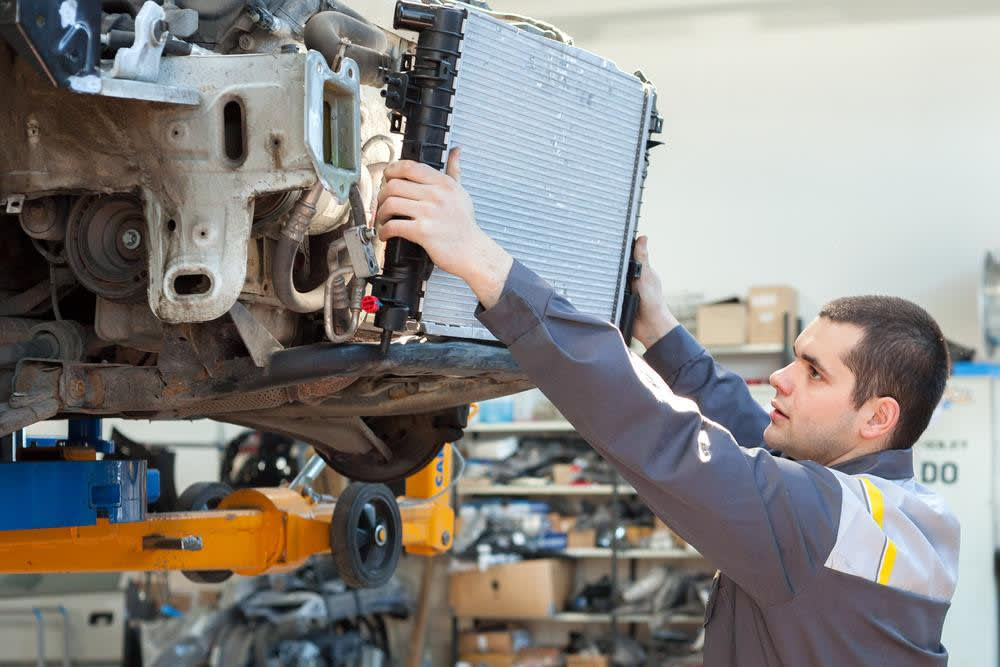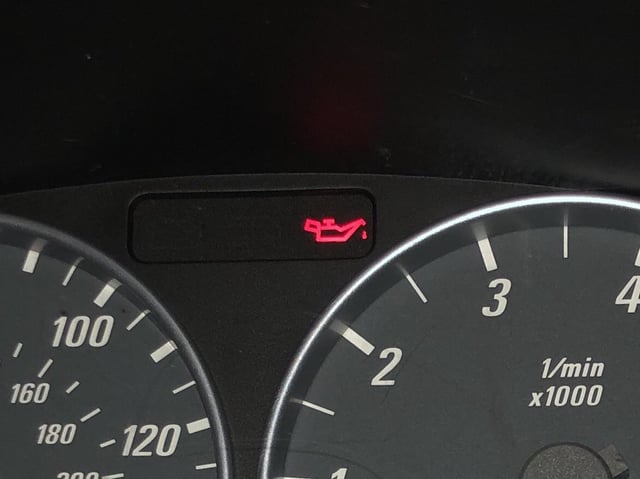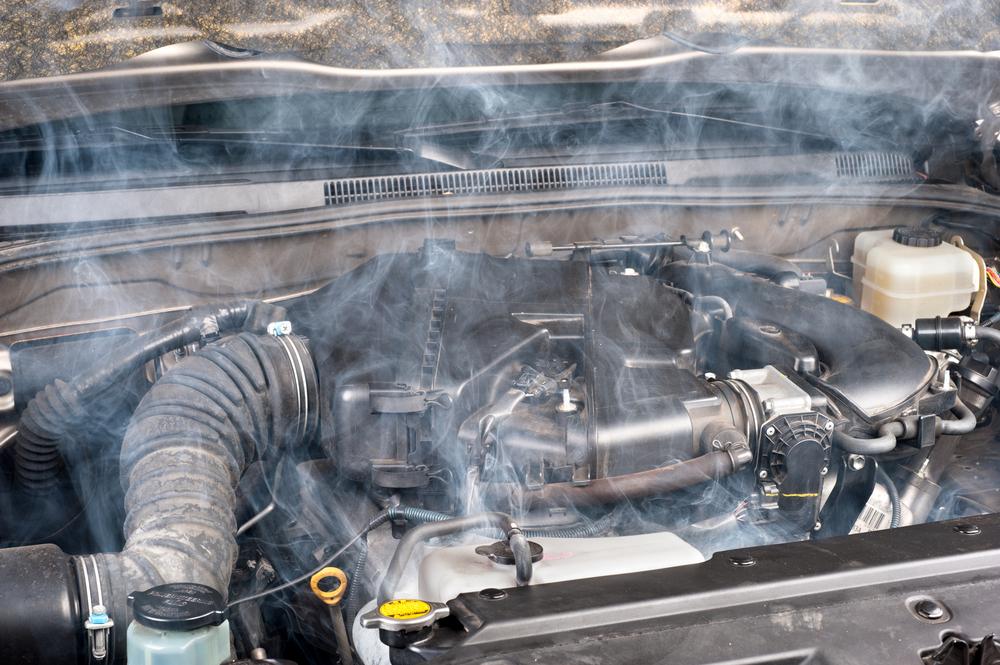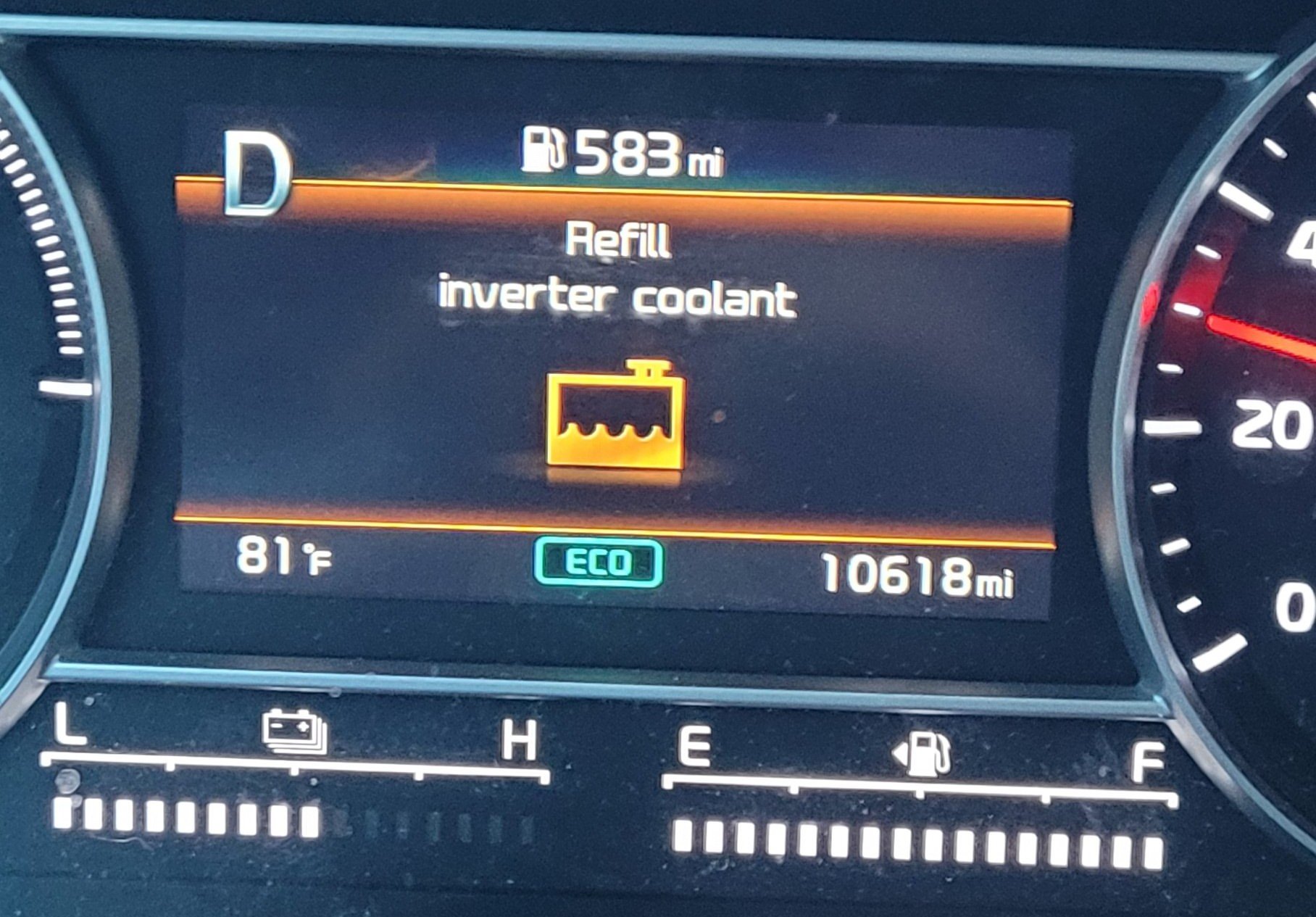How Long Should a Radiator Last in a Car
A car radiator typically lasts between 8 to 10 years. Proper maintenance can significantly extend its lifespan.
Car radiators are critical components of a vehicle’s cooling system, working tirelessly to regulate engine temperatures and prevent overheating. To ensure optimal performance and extend the service life of your car radiator, regular inspections and maintenance are crucial. Neglect and rough driving conditions can shorten a radiator’s lifespan, while timely coolant changes and addressing minor repairs promptly can add years to its serviceability.
Understanding the importance of the radiator and its function in your vehicle’s health is essential for any car owner. Keeping an eye out for signs of wear, such as leaks or rust, and ensuring your radiator is part of your car’s routine service, will help you get the most longevity out of this key component.

Credit: www.youtube.com
Introduction To Radiator Longevity
The lifespan of a car’s radiator is crucial for a healthy engine. Like the human heart, a radiator pumps life into your vehicle, keeping it cool and running smoothly. Understanding how long a radiator should last helps in maintaining peak vehicle performance. We dive into what affects a radiator’s longevity and how to get the most out of it.
The Role Of A Radiator In Vehicle Performance
A radiator ensures your car keeps its cool even on the hottest days. It dissipates heat from the engine, preventing overheating. A well-functioning radiator contributes to optimal engine efficiency, power, and reliability. Without it, your car’s engine could face severe damage or even failure.
- Circulates coolant to regulate engine temperature.
- Transfers heat from the engine to the air outside.
- Helps maintain optimal operating conditions for the engine.
Factors Influencing Radiator Lifespan
Various elements can impact how long your radiator will last. Some are controllable, while others are inevitable.
| Factor | Impact on Lifespan |
|---|---|
| Quality of Radiator | Higher-quality materials can extend a radiator’s life. |
| Coolant Quality | Proper coolant type and regular changes prevent corrosion. |
| Vehicle Usage | Intense driving can shorten a radiator’s lifespan. |
| Maintenance Routine | Regular check-ups can detect and fix issues early. |
| Environmental Factors | Extreme weather can affect radiator durability. |
Maintaining a regular service schedule, using the right coolant, and being mindful of driving habits all contribute to a long-lasting radiator. Spotting leaks early and keeping the radiator clean also play a part.
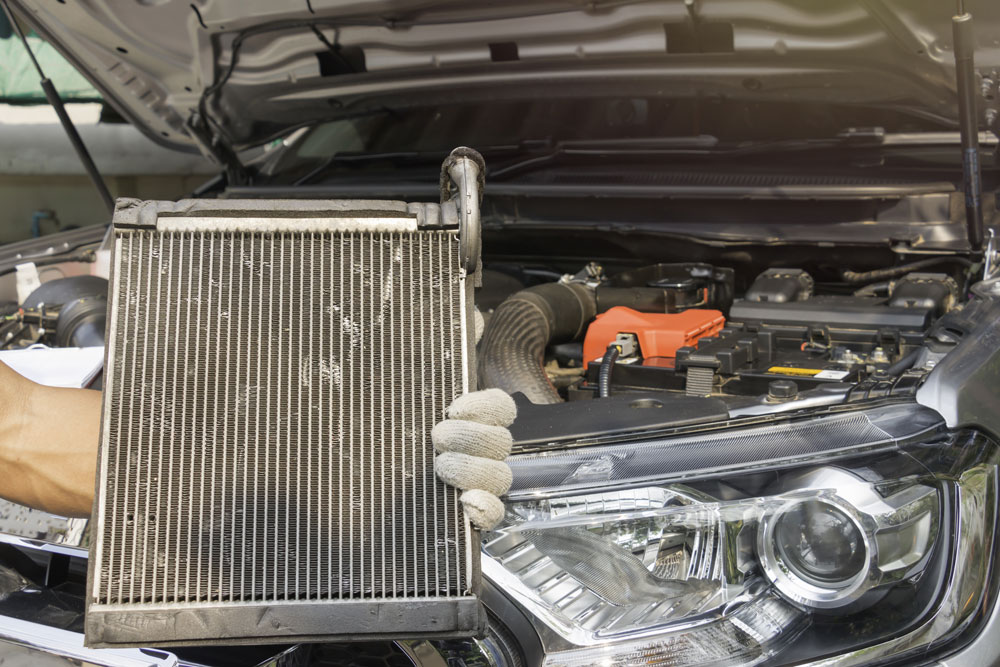
Credit: reddevilradiators.com.au
Average Lifespan Of Car Radiators
Car radiators are key to keeping your engine cool. They stop your car from overheating. The average lifespan of car radiators can vary. Many last between 8 to 10 years. Understanding how long they should last helps you plan for maintenance.
Expected Radiator Lifespan Under Normal Conditions
Under normal driving conditions, a radiator can last quite a while. Normal conditions mean:
- Driving habits that do not stress the engine.
- Regular travel on smooth roads.
- No frequent towing or heavy loads.
Mileage affects lifespan too. Cars driven less may have radiators that last longer. Regular check-ups catch small problems early and can help your radiator stay in shape.
Impact Of Maintenance On Radiator Durability
Maintenance is key to radiator life. Without it, radiators fail sooner. Tips to extend your radiator’s life include:
- Check coolant levels often and top up when needed.
- Change coolant as suggested. Usually this is every 30,000 miles or every 2-3 years.
- Inspect hoses and fix leaks right away.
A well-maintained radiator saves money in the long run. It avoids major car problems. Remember to get your radiator checked regularly.
Common Signs Of Radiator Wear And Tear
The health of your car’s radiator is vital for engine performance. Just like any car component, radiators endure wear and tear. Recognizing the common signs early can save time and costly repairs. Keep an eye out for these symptoms:
Identifying Leaks And Corrosion
Leakage is the most recognizable sign of radiator trouble. A compromised radiator may leak coolant, leading to puddles under the vehicle. Regularly check for wet spots or staining around the radiator.
Corrosion weakens radiators over time. Inspect for rust or discoloration on the radiator’s body. These indicators suggest the radiator’s integrity might be failing.
Overheating: A Symptom Of Radiator Failure
Overheating engines are a red flag. The radiator’s job is to keep the engine cool. When it fails, temperatures rise swiftly. Monitor your dashboard for rising heat levels, especially during high stress for the engine. Swift action is crucial at the onset of overheating to prevent engine damage.
Maintaining Your Radiator
A vehicle’s radiator is key in keeping the engine cool and running smoothly. Like any car component, radiators have a lifespan. With proper maintenance, they can last as long as 8-10 years. To ensure your radiator stays in top shape, you need to follow some best practices in radiator maintenance. Below, find out how regular upkeep can extend the life of your car’s radiator.
Best Practices In Radiator Maintenance
- Regularly check for leaks or damage.
- Ensure the radiator cap is always secure and functioning.
- Maintain the correct coolant level; never let it run low.
- Keep an eye on the temperature gauge for unusual readings.
- Inspect hoses for any signs of wear or brittleness.
- Clean the radiator exterior of any debris or dirt buildup.
Coolant Change: How Often Should You Do It?
Changing the coolant is vital for a healthy radiator. Over time, coolant loses its efficacy and can even become acidic. This can damage various parts of the cooling system. As a rule of thumb, you should replace your car’s coolant every 30,000 miles or every two years, whichever comes first. Adhering to this schedule prevents rust, corrosion, and maintains engine performance.
| Vehicle Mileage | Suggested Coolant Replacement |
|---|---|
| 30,000 miles | Change Coolant |
| 60,000 miles | Inspect; Possibly Change |
| 90,000 miles | Change Coolant |
When To Replace Your Radiator
Car radiators endure years of stress and strain. Yet, they don’t last forever. Recognizing the perfect time to swap your radiator can save your car from overheating hassles. Let’s explore when a fresh radiator is necessary, and how to choose the best one for your car.
Making The Call: Repair Vs. Replacement
Several signs suggest a radiator needs repair or replacement.
- Leaks: Puddles of coolant under the car.
- Overheating: Temperature gauge spikes regularly.
- Discoloration or rust: On the radiator’s surface.
Analyze the extent of damage to decide.
| Severity | Repair | Replace |
|---|---|---|
| Minor | Possible | Not needed |
| Moderate | Temporary fix | Consider replacement |
| Severe | Not advisable | Essential |
Consult a mechanic if unsure. Pick replacement over repair for severe issues or older radiators.
Choosing The Right Radiator For Your Car
Choosing the perfect radiator is crucial. Ensure compatibility and quality.
- Check the manual: Find the correct specifications.
- Quality materials: Go for aluminum or heavy-duty plastic.
- Warranty: Confirm there’s a warranty for peace of mind.
- Brand reputation: Select known brands with positive reviews.
Careful selection guarantees a lasting and efficient radiator. If uncertain, seek professional advice.
Technological Advances In Radiator Design
Taking a closer look at Technological Advances in Radiator Design, it’s clear that the longevity of a car radiator has significantly shifted thanks to modern improvements. With these advances, the big question is: how have these technologies affected the lifespan of a car radiator? Let’s delve into the exciting world of radiator innovation and explore what the future holds.
Material Innovations And Longevity
Today’s radiator materials are miles ahead of what they used to be. The past predominantly featured brass and copper radiators. Modern vehicles boast aluminum and plastic. These materials are not just lighter, but they are also more corrosion-resistant. This means that they last much longer. Let’s explore these material advancements and their impacts:
- Aluminum: A lightweight metal with excellent heat-dissipation properties.
- Plastic: Used in end tanks for reduced cost and weight; has improved with better heat tolerance.
With these materials, manufacturers now confidently offer radiators that promise extended service life.
| Material | Benefits |
|---|---|
| Aluminum | Lightweight, efficient cooling |
| Plastic | Cost-effective, lightweight |
Future Radiator Technologies And Lifespan Expectations
Peering into the future of radiators, there’s much to be excited about. Scientists and engineers are developing technologies that could redefine what we expect from a car’s cooling system. These include:
- Active Cooling Control: Systems that adapt to temperature demands in real-time.
- Advanced Thermal Materials: Improvements in heat dissipation and resistance to thermal stress.
- Electrification: Electric and hybrid vehicles require efficient cooling for both the engine and battery systems.
These advancements promise to not only extend the lifespan of radiators but also enhance vehicle performance and efficiency. It’s an exciting time for automotive technology, and the humble radiator is no exception.
- Longer Lifespan: Future technologies aim to ensure radiators last the vehicle’s life.
- Greater Efficiency: Optimized performance, emissions, and fuel economy.

Credit: www.dubizzle.com
Frequently Asked Questions On How Long Should A Radiator Last In A Car
What Is The Typical Lifespan Of A Car Radiator?
A car radiator typically lasts between 8 to 10 years. However, this can vary based on maintenance, usage, and environmental conditions. Proper care can extend its lifespan.
Can A Radiator Last The Life Of A Car?
Radiator longevity can approach the car’s lifetime, especially with regular upkeep. However, it’s not guaranteed and mostly depends on the vehicle’s maintenance and operational conditions.
Signs A Car Radiator Needs Replacing?
Indications for replacement include persistent overheating, coolant leakage, and sludge in the radiator. Corrosion or damage to radiator fins can also signal the need for a new radiator.
How Often Should A Car Radiator Be Serviced?
It’s recommended to service your car radiator at least once every two years. Regular maintenance includes flushing the cooling system and checking for leaks or damages.
Conclusion
Understanding the lifespan of your car’s radiator is vital for vehicle maintenance. A well-maintained radiator can last between 8 to 10 years, although this varies with usage and car model. To ensure your radiator’s longevity, remember to schedule regular check-ups and address any issues promptly.
Proper care will help keep your engine cool and your travels worry-free.

